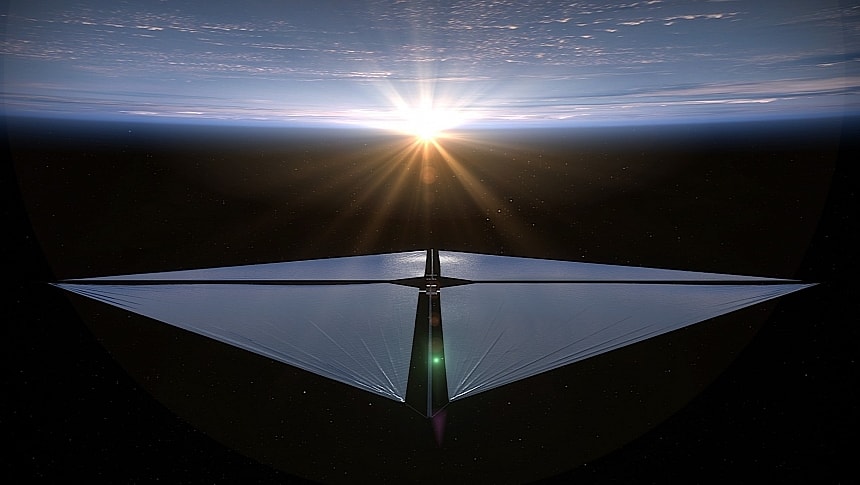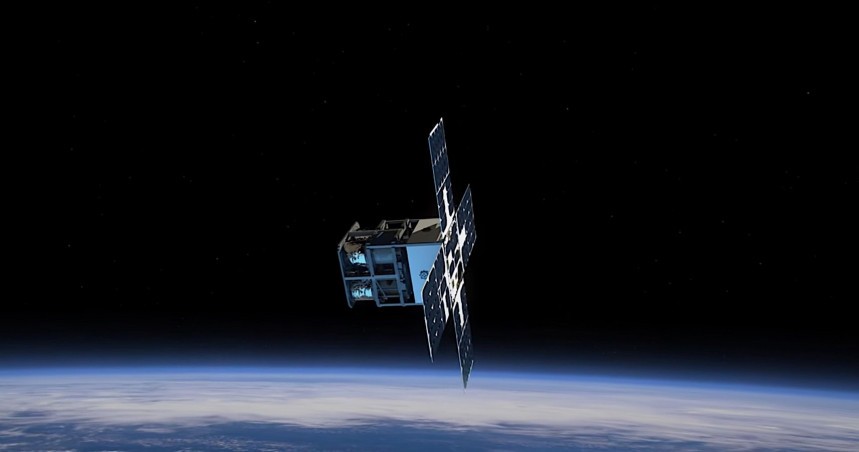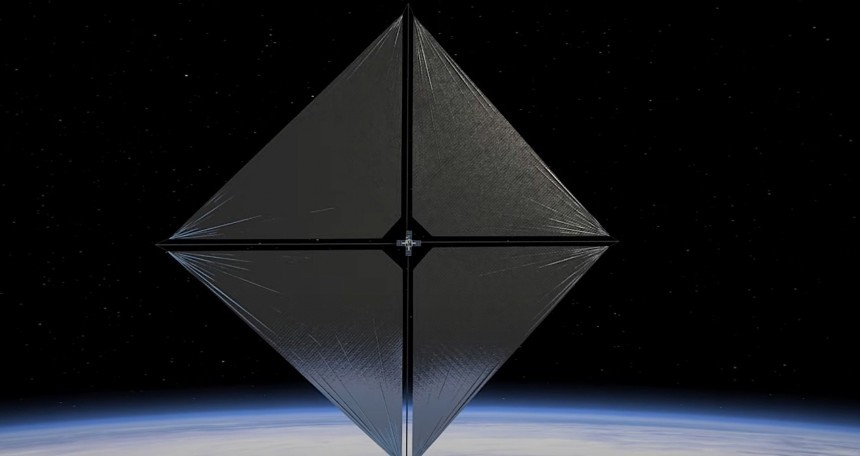Depending on the mission they've been created to fulfill spacecraft can be powered by a variety of technologies. Presently, the most widespread is the one that uses propellant and rocket engines. But a new kind of propulsion, ideal to power small uncrewed spacecraft in exploratory missions of the solar system is gaining increased traction: solar sails.
Solar sails are by no means a novel concept. Drawing inspiration from how the human race used to sail over the waters of our planet, the system relies on the power of sunlight to generate thrust.
In a nutshell, the light emitted by the Sun is comprised of something called photons. That would be particles of light that have the ability to push a spacecraft forward as long as they hit some sort of opposing surface. Just like the wind does with boats here on Earth.
Several solar sails have been tried over the years, but none of them made it to maturity just yet - meaning they've never truly powered a spacecraft that wasn't specifically built to test the sail itself. But as research in this field accelerates, it's probably only a matter of time until that happens.
The most recent piece of news on this front comes from American space agency NASA, which announced last week that it is getting ready to launch a new kind of solar sail that may revolutionize such technologies.
You see, one of the trickiest parts of making a solar sail is not the sail surface itself but the booms that are used to deploy them. That's because solar sails are meant to extend after the ship reaches space.
At the moment there are only so many materials booms can be made from, and so many structures that can be used, and that limits the capabilities of a functional sail. NASA says it kind of solved that problem and promises "to change the sailing game for the future."
The hardware that will do that is officially called Advanced Composite Solar Sail System (ACS3), and it physically comprises twelve NanoAvionics CubeSats linked together. The boom that's meant to unfurl the sail is made of flexible polymer and carbon fiber materials.
NASA says this way of making the booms ensures they are both stiffer and lighter than what came before, which were either heavy, metallic structures or light but bulky ones that didn't necessarily fold as they should have.
The new NASA design comes as tubes that can be squashed flat and rolled like a tape measure – up to 23 feet (seven meters) of booms can be rolled into something that fits in a human hand, NASA says. The design also provides less bending and flexing during temperature changes, which is what the spacecraft is expected to experience in space.
NASA's mission will launch on board a Rocket Lab Electron rocket that will depart at the end of the month (after April 24) from New Zealand. The rocket will push the CubeSat spacecraft to a Sun-synchronous orbit located 600 miles (1,000 km) above the surface of the planet.
Once there, the ACS3 will engage the booms in a bid to extend the sails. The procedure should take about 25 minutes, and it will result in an ultra-thin reflective polymer solar sail with a surface area of 860 square feet (80 square meters), which would be roughly the size of six parking spots.
Looked at in two dimensions, the sail will look like a square about half the size of a tennis court (33 by 33 feet / ten by ten meters). And it will be quite reflective, with NASA estimates saying it could become just as bright as the brightest star in the night sky, Sirius.
This means that if the conditions are just right, solar sail spacecraft will be visible from Earth. At the time of writing NASA didn't share any details on the places from where the sail could be visible.
The main goal of the space mission is to put the new booms and their deployment to the test, but if that goes according to plan NASA is confident it could test the effectiveness of the sail itself as well.
If this thing works, it could really open up solar sail exploration of the solar system. As per NASA, the boom design could be scaled to be able to casually deploy solar sails as large as a basketball court: 5,400 square feet (500 square meters). In some cases, depending on mission needs, the size of the thing could grow to as much as 21,500 square feet (2,000 square meters), which is half a soccer field.
The use of solar sails has clear advantages over conventional spacecraft design, the most important of all being the fact that heavy propulsion systems are no longer needed. And that, in turn, could lead to lower costs and increased duration of the missions.
The composite booms being developed for the sails could also be used on the ground, in select locations on the Moon and Mars, as part of the habitats that will eventually be built there.
We will keep an eye on the ACS3 mission and come back with updates as soon as it gets going and the test results are in.
In a nutshell, the light emitted by the Sun is comprised of something called photons. That would be particles of light that have the ability to push a spacecraft forward as long as they hit some sort of opposing surface. Just like the wind does with boats here on Earth.
Several solar sails have been tried over the years, but none of them made it to maturity just yet - meaning they've never truly powered a spacecraft that wasn't specifically built to test the sail itself. But as research in this field accelerates, it's probably only a matter of time until that happens.
The most recent piece of news on this front comes from American space agency NASA, which announced last week that it is getting ready to launch a new kind of solar sail that may revolutionize such technologies.
You see, one of the trickiest parts of making a solar sail is not the sail surface itself but the booms that are used to deploy them. That's because solar sails are meant to extend after the ship reaches space.
At the moment there are only so many materials booms can be made from, and so many structures that can be used, and that limits the capabilities of a functional sail. NASA says it kind of solved that problem and promises "to change the sailing game for the future."
NASA says this way of making the booms ensures they are both stiffer and lighter than what came before, which were either heavy, metallic structures or light but bulky ones that didn't necessarily fold as they should have.
The new NASA design comes as tubes that can be squashed flat and rolled like a tape measure – up to 23 feet (seven meters) of booms can be rolled into something that fits in a human hand, NASA says. The design also provides less bending and flexing during temperature changes, which is what the spacecraft is expected to experience in space.
NASA's mission will launch on board a Rocket Lab Electron rocket that will depart at the end of the month (after April 24) from New Zealand. The rocket will push the CubeSat spacecraft to a Sun-synchronous orbit located 600 miles (1,000 km) above the surface of the planet.
Once there, the ACS3 will engage the booms in a bid to extend the sails. The procedure should take about 25 minutes, and it will result in an ultra-thin reflective polymer solar sail with a surface area of 860 square feet (80 square meters), which would be roughly the size of six parking spots.
Looked at in two dimensions, the sail will look like a square about half the size of a tennis court (33 by 33 feet / ten by ten meters). And it will be quite reflective, with NASA estimates saying it could become just as bright as the brightest star in the night sky, Sirius.
The main goal of the space mission is to put the new booms and their deployment to the test, but if that goes according to plan NASA is confident it could test the effectiveness of the sail itself as well.
If this thing works, it could really open up solar sail exploration of the solar system. As per NASA, the boom design could be scaled to be able to casually deploy solar sails as large as a basketball court: 5,400 square feet (500 square meters). In some cases, depending on mission needs, the size of the thing could grow to as much as 21,500 square feet (2,000 square meters), which is half a soccer field.
The use of solar sails has clear advantages over conventional spacecraft design, the most important of all being the fact that heavy propulsion systems are no longer needed. And that, in turn, could lead to lower costs and increased duration of the missions.
The composite booms being developed for the sails could also be used on the ground, in select locations on the Moon and Mars, as part of the habitats that will eventually be built there.
We will keep an eye on the ACS3 mission and come back with updates as soon as it gets going and the test results are in.













